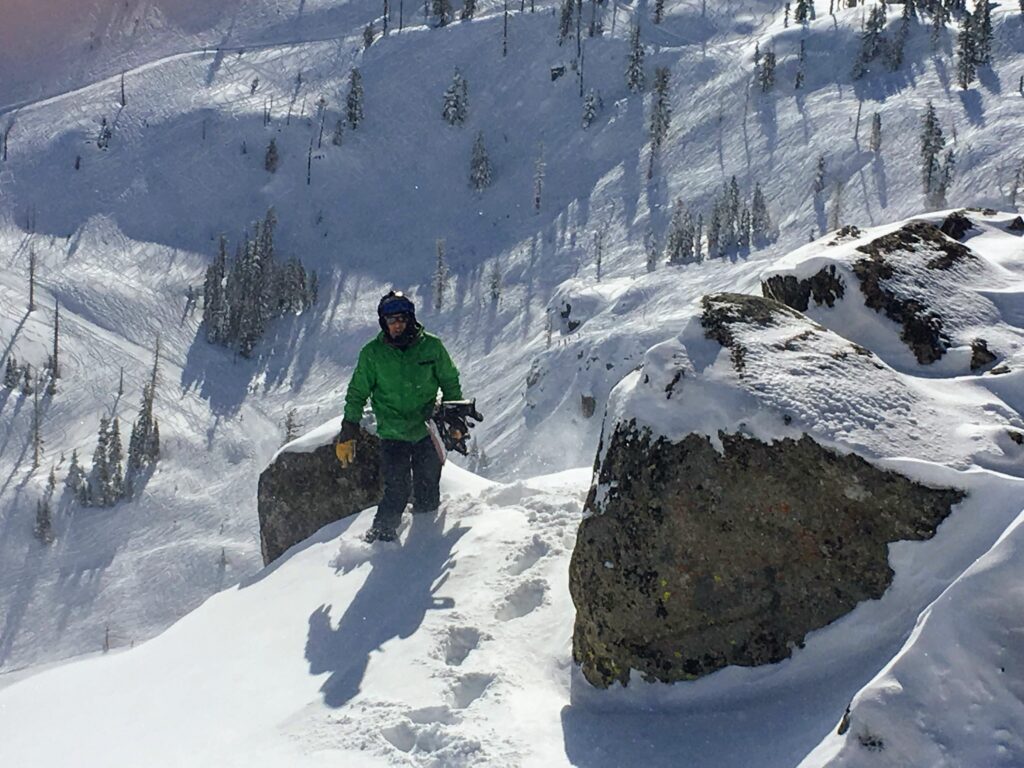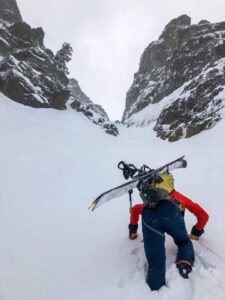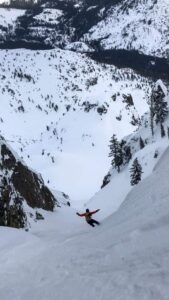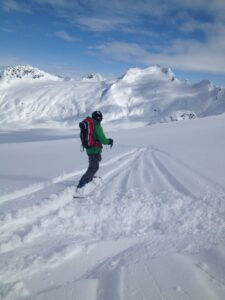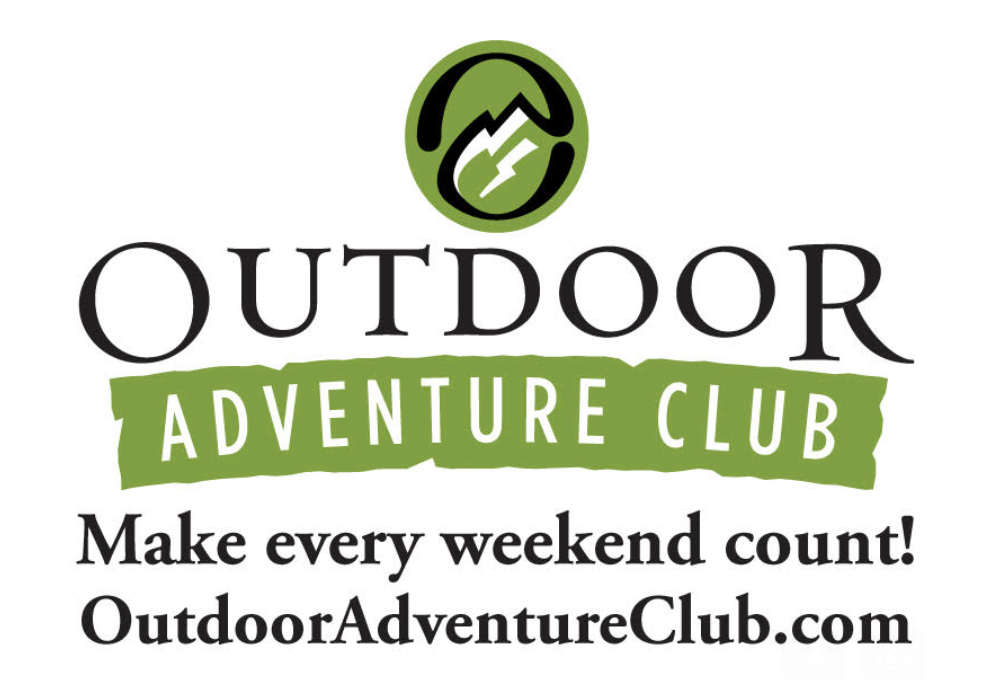Backcountry Skiing, Snowboarding (spilt-boarding) Q&A Series
Part 7: interview with Mathias Bjoern, Founder of 48 FreeRiders, a backcountry skiing, riding community based out of Denmark
’48 FreeRiders is a community of backcountry enthusiast and freeride skiers/boarders ⛷🏂❄️
Our goal is to spread avalanche awareness and connect like-minded people. A place where you can share your adventures, knowledge, experience and find other freeriders in your area or areas you are traveling to’
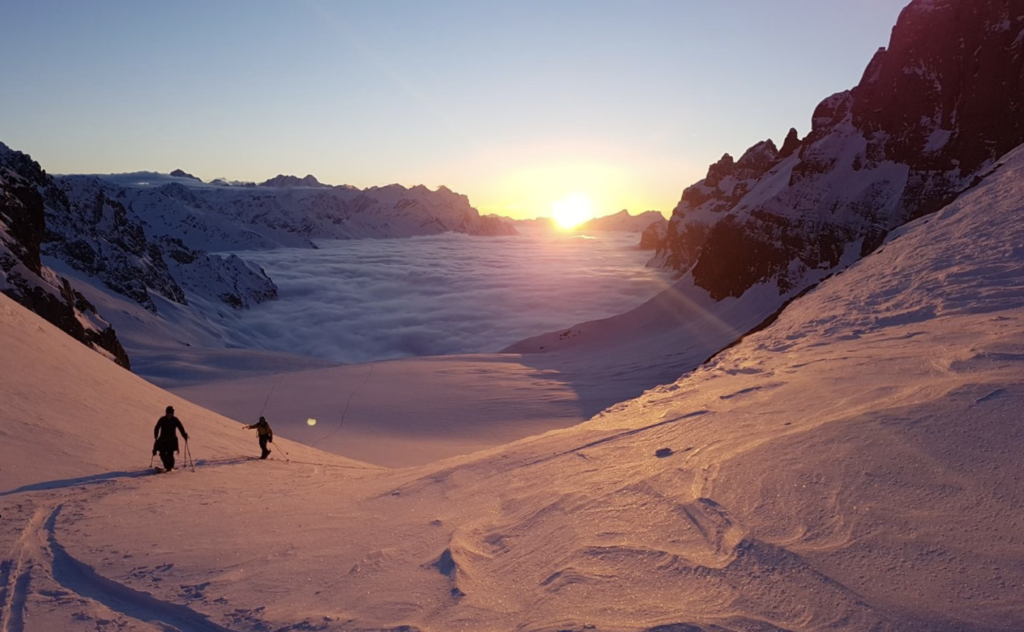
Photo Credit: Mathias Bjoern
Background timeline context
The boom in backcountry skiing, snowboarding and other snow-sports was brought on by the COVID-19 pandemic as ski resorts started closing down like falling dominoes starting in March of 2020 as state and local counties mandated ‘stay at home’ (SIP) orders as coronavirus outbreaks spiked.
Winter season 2020/21 will likely see similar trends especially pronounced if resorts are unable to implement effective protocols of limiting on-site visitors’ capacity, and social distancing especially indoors in common areas which will result in COVID infection outbreaks resulting in resorts’ closures.
Of particular concern is that finally CDC acknowledges that the coronavirus infection transmission is airborne by aerosols which means it is highly contagious. This fact does not bode well so we’ll see how this flu season and winter months play out.
Back to our topic, our backcountry Q&A feature looks at backcountry from a range of diverse perspectives, from an amateur to expert backcountry skier, from a ski shop small business retailer to backcountry touring guide, these Q&A series provide some key insights and also we’ll list resources to consider for avalanche safety training that is critical to stay safe in the backcountry. Most importantly, we list key resources to connect you with folks who share a passion and love for the backcountry.
Part 7 Q&A interview with Mathias Bjoern, an expert backcountry skier and Founder of 48 FreeRiders
Could you tell us a little about your background in BC, snow-sports and how you came to create 48 FreeRiders?
The idea of creating 48 FreeRiders has been brewing with me for a few years. My name is Mathias Bjoern, and I’m the founder of 48 FreeRiders, a community for backcountry enthusiasts, freeride skiers, and snowboarders.
I’m a certified ski instructor and have had six years of experience. I have been skiing and teaching all over the world and I often come across skiers and snowboarders in the backcountry without any avalanche gear or knowledge about what they are doing.
I look at them and think back at my self and how much I have learned through these four years as I used to be one of the guys in the backcountry without any gear, but as I learned more about the dangers in the backcountry and educate myself through avalanche courses and hands on training, I’ve learned how ignorant and naive I had been! I had not only placed my own life in danger, but also the people around me on backcountry outings!
From everything I have learned in the past four years of being in the backcountry, I decided that there must be a way to spread this information to other people and prevent others from making the mistakes that I have made.
We live in a world that is heavily influenced by what we see on TV and social media and there’s not many who addresses issues like avalanches and other dangers in the mountains on social platforms that comes across in an easy to understand format. People are too busy with showing their glamorous lifestyle, the deepest powder turns of their life without taking time to share the lifesaving importance of the backcountry education, preparation and planning that goes into getting to these spots, skiing gnarly lines, etc.
I decided that I would build a community where backcountry enthusiast and freeride skiers and snowboarders can share the preparation, avalanche knowledge, helping each other with staying safe, and meet like-minded people, as well as a place where I can invite mountain guides to share conversations about avalanche awareness, letting the professional share their knowledge and experience with the community, and hoping for this to catch people’s attention so they become more interested in avalanche awareness and backcountry safety. By getting people interested, I hope that they will look for more knowledge themselves and do avalanche courses. That way we can create backcountry with people who are not only amazing skiers and snowboarders, but also fully knowledgeable of avalanche dangers and ready to help in case of accidents.
Now with the COVID pandemic, more people are stocking up on ski touring gear and split boards, and mountain guides are going to be busier than ever teaching avalanche awareness, to the people that understand that there are dangers in the backcountry and want to proceed with it with caution, but not everyone understands this, and we will see people wandering into the backcountry with no avalanche gear and no idea about what they are doing which will put undue risks upon themselves and on people who are with them. As I mention earlier, they are not only going to be placing themselves into danger, but also the people around them in the backcountry, as they can set off an avalanche, that can hit the people below them, and then there is no one to save the people getting buried as the people setting off the avalanche have no gear to find them or dig them out with. This is a topic that I speak with Jees Hotter (Freeride World Tour athlete about in episode 6 of our series “Backcountry Talk”, that you can find on our new website (48FreeRiders.com), YouTube, and also as a podcast on SoundCloud.
Even before the COVID pandemic, I was seeing an increase in skiers and snowboarders getting into backcountry and ski touring/split boarding. The COVID pandemic was the catalyst that brought on the spike of interest and influx of newbies to the backcountry.
48 FreeRiders is a social media-based platform with members all over the world. Our goal: if you join 48 FreeRiders both on Instagram and Facebook, you can use these platforms to find people in your area or areas that you may be traveling to. Our Facebook group is made for the members to post their tours, experience, knowledge but also a place where you can post and ask if there are members in your area there want to go ski touring with.
What gear do you need to get into backcountry skiing/snowboarding?
The most important gear when you wander into the backcountry is your avalanche gear which is made of a transceiver, shovel, and probe. This is the 3 most essential things you will need. Without these 3 things, it will be pretty much impossible for you to find a buried person in an avalanche. I use a BCA Tracker 3, a metal shovel, and a 3-meter long probe. (You can buy this as a set). There are many different brands out there that make great transceivers, the most important is that you practice so you become an expert at using yours, especially how to find multiple people and flagging people with the probe. I personally find the BCA Tracker 3 the easiest to use, which is why I chose it.
To decide which skis and split boards to buy, ask what you want to get out of your skis?
Do you want lightweight for uphill treks?
Do you want something that you can charge with on the way down?
Do you want pin- or frame-binding?
Do you want a wide or narrow ski?
Do you want stiff or soft skis (I prefer stiff ski to charge down the mountain)?
Do you want to snowshoe or split board?
Stiff or soft board?
etc
How can a newbie get into backcountry skiing and snowboarding?
We recommend doing an avalanche course; there are plenty of them around the world, or you can hire your own mountain guide and get them to teach you the basics, which will give you a rough understanding of how avalanches work and what to look out for.
Find a crew of people to go into the backcountry with, where everyone has the possibility to get to lead the tour, so everyone knows what is going on and is learning from the experience as well as making sure everyone gets a saying in the decision making. Make sure there is a culture of never be afraid of saying what you think, and that it is okay to turn around if the danger/risk is too high. It’s best to be conservative in the backcountry, a life-saving rule to adhere to is: if one person in the group has a reason to turn around, the whole group will as a team, will turn around. It needs to be a reason based on factual backcountry observations and evaluation.
Starting with small and easy tours! You can maybe ski all the runs in the resort with your eyes closed but the backcountry is a completely different beast, so start small and build your skill up to the more gnarly stuff. Remember that avalanche terrain often starts around 30 degrees.
I think some people are terrified without any reason or knowledge, and some are overconfident. Finding a balance between these two by using knowledge and experience to judge the condition with the focus on getting safely back to shred another day is the healthiest approach to backcountry skiing and snowboarding.
Reflecting on the decision that you and your group made in the backcountry is key to improving; ask:
What decision did we make that was good?
What decision did we make that was not so good?
What can we learn from this?
How can we make sure we don’t make these mistakes in the future?
We hope you find this interview useful and perhaps our paths cross and we’ll have an opportunity to share some powder shredding with you in the backcountry. We also hope that you will be interested in joining our community to share your wisdom and to help spread avalanche awareness so that backcountry skiing is not only fun but safe place for recreational snow sports.
Best Regards,
Mathias Bjoern
Founder of 48 FreeRiders. Currently, I live in Denmark where I’m from. I have been fortunate to be able to travel for four years on the road skiing all over the world.
Part 1
Part 2
Part 3
Part 4
Part 5
Part 6
Interview with Shane Robinson Owner & Lead Guide at Graybird Guiding based out of Baker Mt, WA
Backcountry Skiing, Snow-Sports Resources
✔ San Francisco Backcountry Skiers Facebook Group: ‘San Francisco Backcountry Skiers (and Riders) is a resource and inspiration for people in the San Francisco area (and beyond) who are interested in backcountry skiing and riding. SFBS welcomes both experienced and aspiring backcountry skiers and riders.’ Membership type: free, public group. 3.3k members. Visit their FB group page.
✔ SnowPals.org is a non-traditional snow-sports club for busy Bay Area professionals. Join SF Bay Area professionals to expand your circle of ski and ride buddies (resort based and backcountry), btw, that’s how we came up with our name: Snow (Snow-Sports) + Pals. Membership type: one-time paid membership fee of $20; join SnowPals. Read members’ intros to get an idea who joins. Founded in 1999 by a small group of friends; we are now 8,249 members and growing. Celebrating our 21st year of connecting folks to expand their circle of snow sports activity partners.
✔ Lake Tahoe Backcountry Ski Topographic Maps and Guidebook
✔ California Ski Company in Berkeley is one of the top ski shop retailer for ski gear for sale and rentals, plus boot fitting and equipment service. Cal Ski Co is a ‘specialty ski shop focused on ski equipment sale and rental since 1989. They sell and rent equipment for both Resort and Backcountry Ski Touring. Their team of expert ski boot fitters are the best in the business. They repair and tune about anything that slides on snow. Looking for a job? Cal Ski Co is currently hiring as of October 29, 2020. Full-time and part-time employment available: job openings, ski tech and boot-fitter. Experience is desirable but not necessary. The only criteria is that you are a skier. Interested or know of someone who is? Email resumes to .’
✔ Backcountry and Outback Adventures for Telemark and Randonee Ski Rentals, Fremont, CA and Larkspur, CA – Outback Adventures is a comprehensive outdoor adventure guide service, rental shop, and paddlesports and nordic ski specialty retailer located in the San Francisco Bay Area.
✔ Sequoia National Park Lodging WUKSACHI LODGE
Located in the Giant Forest area of Sequoia National Park, Wuksachi Lodge is a modern lodge with 102 guestrooms. It offers a cocktail lounge, a full service restaurant and both a retail and ski shop. At an elevation of 7,050 ft. (1,980 m), Wuksachi Lodge is only 4 miles away from the Giant Forest Museum.
Delaware North Parks & Resorts offers multiple services like overnight accommodations, retail, food and beverage, etc. at Kings Canyon National Park in the area of Grant Grove and Cedar Grove. Limited Internet is available in some areas of the main lodge. Wuksachi Lodge is open throughout all the seasons.
At an elevation of 6,500 ft (1,980 m), the Grant Grove Cabins is located in the Grant Grove area of Kings Canyon National Park. It offers 6 types of cabins; some are even opened all year. Main attractions like a sequoia grove, gifts shop, markets and restaurants are half a mile (800m) away from the Grant Grove Cabins. Open: All Year (limited in the winter)
✔ PEAR LAKE WINTER HUT
Managed by the Sequoia Parks Conservancy, Pear Lake Winter Hut is a rustic hut of 10 bunk beds that opens during winter and requires reservations but only for wilderness skiers who travel to Pear Lake during the cold season. At an elevation of 9,200 ft. the hut sits high above Lodgepole. This hut includes a wood-pellet stove. To get to it, you need to go through six miles on skis or snowshoes. Reservations can be made online or by phone: 559-565-3759.
Got a key backcountry resource not listed here that you’d like to share? Contact . Advance thanks for sharing.
* Browse Tahoe area rentals and private seasonal ski leases:
🏂
http://www.snowpals.org/rentals/
* Browse shared ski leases: :
🏂
http://www.snowpals.org/leases/
* How to increase bookings for your rental, ski lease listing on Airbnb, VRBO, HomeAway, FlipKey, Craigslist:
🏂
http://www.snowpals.org/2020/property-owners-guide-tips-create-appealing-listing-vacation-rental-ski-lease/
♥ Share this page with friends and family via , twitter, facebook.


